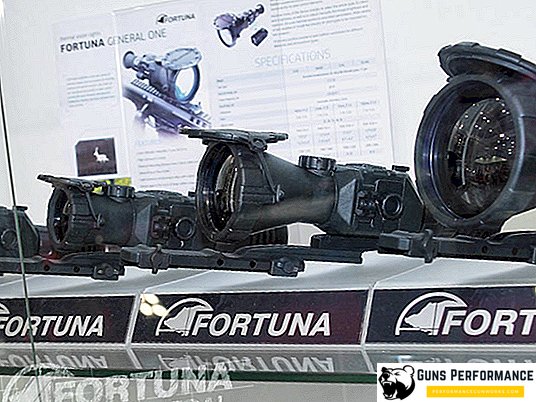This is due to the rounded tip of the blade. Judging by the revelations of adventure writers, this is done in order to make the fights in port taverns less traumatic.

That is just to achieve its goal mount reconstructors failed. The butt of the knife was rounded off to the point, but some no pointed part remained. It was possible to completely remove the tip, making the sailor’s knife something of a table one — but the ship’s bosses didn’t come to such radicalism.
In general, the original sailor or "sea" knife was very similar to the Finn. The straight blade ended in a point with a characteristic "pike" or without it. In the first case, the bevel of a butt was sometimes sharpened for a false blaze, but this was due to unconfirmed rumors and memoirs.
So old sailor's knives have not reached us. But the document has remained, the authorship of which is ascribed to as much as the British admiral Francis Drake. It follows from this that this illustrious filibuster in the service of Her Majesty was preoccupied with fights on the ships of his squadron. Then, in the era of the sailing fleet, travels could last for months, and it was difficult for people to get along with each other in tight spaces. Of course, at that time no one had heard about the trainings on psychological compatibility, such as those being performed by modern cosmonauts and submarine crews. Yes, and tell Sir Drake about the submarine — you would have to go over the board or take a bath under the keel in no time. To avoid, so to speak, the spread of delirium. In general, Comrade Drake confined himself to equipping the ship's carpenter with a grindstone and ordered to round the ends of the sailor's knives. Say, let brave sea wolves find out the relationship in a noble box. Incidentally, the sailors who left the service on the service basis were given a sailor’s knife in its “original” form - without a broken tip.
The handle of a sea knife was more often laid on from solid wood. Already much later rumors surfaced about some non-sinking copies. And later, so much so that the sailing fleet has already managed to sink into the river of times, leaving behind only yachts. Therefore, we will not talk about them. So, the length of the knife with the handle was 24 centimeters, 13 of which accounted for the blade itself. The straight blade was sometimes replaced by a curve with internal sharpening, i.e. exactly like a garden knife or sickle. Often the blade was complemented by another important tool - the pig. From the mention of her, it would be logical to go directly to what the sailor’s knife was originally intended for.
Application:
Contrary to the assertions of numerous marine writers, the sailor’s knife was by no means a means of clarifying relations, but rather a working tool. Its intended purpose is to cut the ropes and separate them into their component parts. Just for the last and needed was the above-mentioned pile. The tool was originally a kind of square cross-section. Then they began to round it up in the upper part, since it was more convenient to work this way.

Another pile came in handy for disentangling ingenious sea knots and ... just for tavern fights. If the blade of the knife with the light hand of Admiral Drake rounded - then the pile was sharpened "into a needle." Her zealous visitors of port taverns were also awarded with her blows.
Subsequently, the sailor's knife was added with another important thing for a sailor - a corkscrew (... yo-ho-ho and a bottle of rum! ...). It is known that the corkscrew was originally made by ship's craftsmen, for which they could often be punished by molting. It should be said that both the pile and the corkscrew became possible only at the time when the sailors changed their habitual knife with a fixed blade to a folding one. So it was much more convenient to carry the tool in your pocket, and the ship officers only welcomed the initiative of the sailors. Why? Yes, because the spring in the marine skladnik was quite tight, so making the knife for the battle was slower than just snatching the blade “fix” from the case.
Manufacturing:
Unfortunately, no reliable information about the manufacturers of sailors' knives has survived to this day. And this, on the one hand, is very strange. The fleet - not only military, but also merchant - is an integral part of many states and it had to be supplied with everything necessary on a centralized basis. And here it seems that the sailors ordered their knives from the first blacksmiths.

It is possible that it was so, and this can be found some confirmation. As mentioned above, the shipwrights mastered the edges of the knives. Agree, they would hardly have done this with state property! However, if sailors ordered knives from private producers, then at that time there was nothing particularly strange about it. For example, the Russian hussars had to sew a uniform at their own expense, the musketeers of the times of Louis XIII lived in rented apartments and bought gunpowder and bullets at their own expense. But closer to the XIX century, anyone can find out that sailors' knives were already widely produced in the factories of England, Sweden, Holland and other maritime powers. In particular, the firm "Fiskars" (Finland) supplied those who wanted with the type of knife that would later be called Finn. Apparently, the English admiral was not a decree to the hot Finnish guys.
So here it is strange that the sailing fleet has sunk into oblivion, and the knife is alive and well. Moreover, he is also progressing - in fact it was the Finn that served as the prototype for many combat knives, such as the legendary "Cherry", which is still in service.
Sailor or boatswain?
In addition to the usual sea knife, on the pages of various kinds of novels one can also find the so-called "boatswain". According to the logic of things, since a boatswain is no longer a mere sailor, but after all, a junior commanding staff, then his knife should be different from the ordinary sailor’s knife. But alas and ah. Here is a trick of a purely linguistic nature. The fact is that as the sailing fleet began to take positions, the sailor’s knife moved to the lifeboats as inventory. Or, if you want, a survival knife at sea. And it was called not sailor, but boat. From time to time the inventory was written off, what the boatswains most often did. Many took knives for themselves - hence the name. But only few people know about it, so many collectors of knives came across the fact that they were selling the sailor’s knife with a substantial premium to the real value (presumably, for the title of owner). We sincerely wish you not to fall for this bait!













